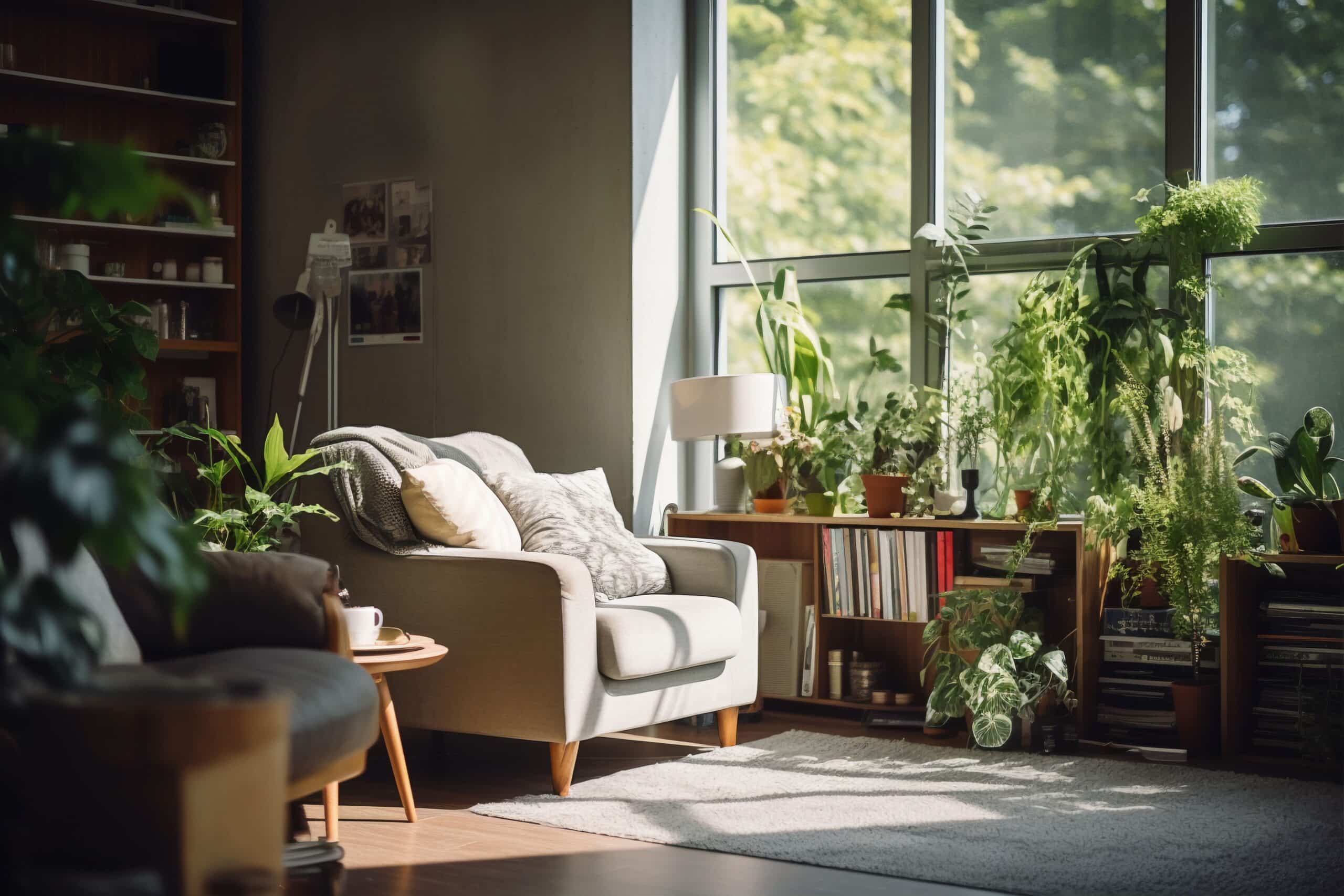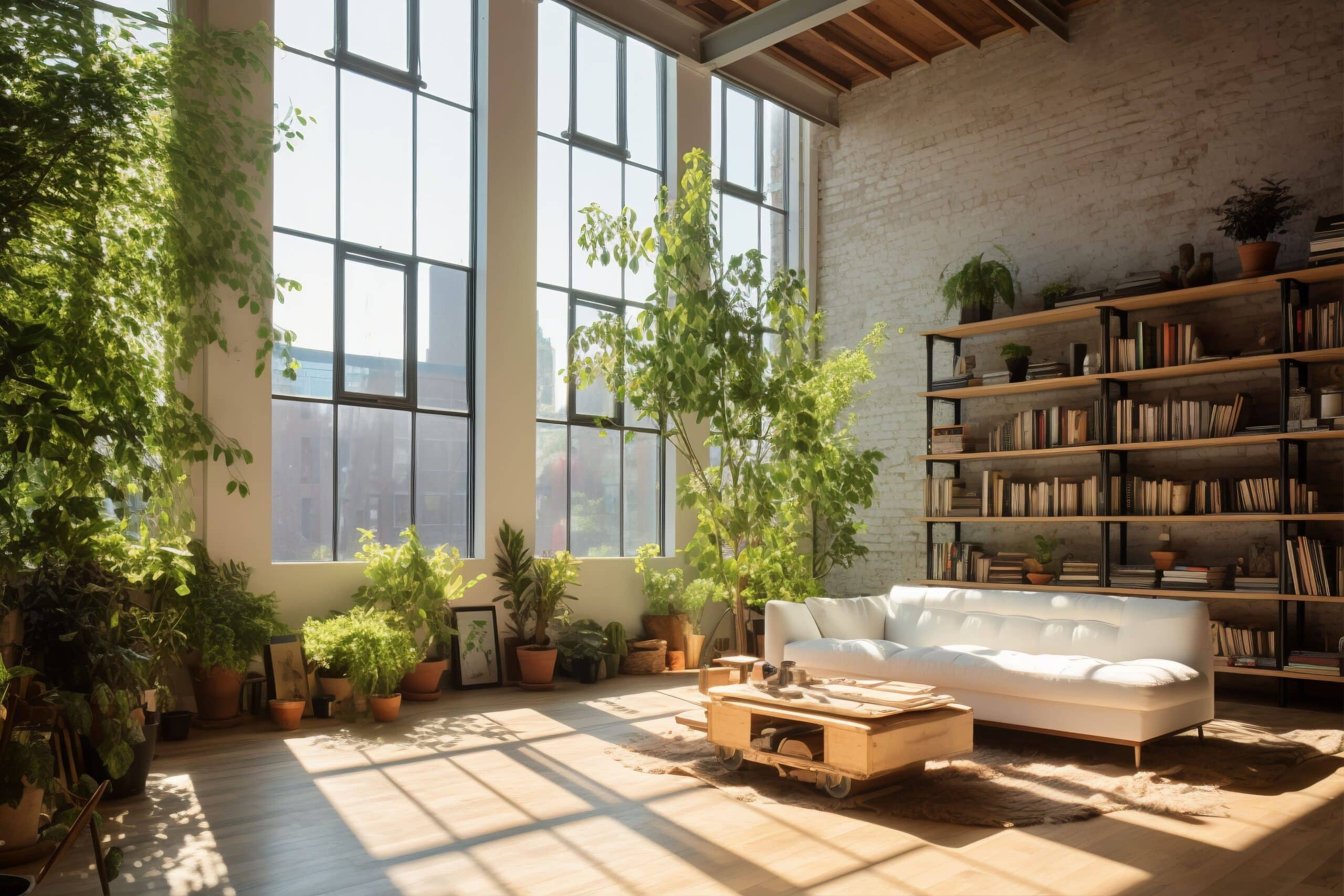
Sustainable Interior Design: All You Need To Know
Interior sustainability revolves around meeting present needs while safeguarding the ability of future generations to meet their own. Sustainable interior design prioritizes environmental consciousness, placing emphasis on utilizing recycled materials. It aims to mitigate negative impacts on the environment while enhancing the health and comfort of occupants through eco-friendly design principles. By integrating sustainable practices into interior design, such as utilizing renewable resources and promoting energy efficiency, spaces can be created that are both environmentally responsible and conducive to well-being. Additionally, focusing on eco-friendly design not only benefits the environment but also contributes to creating healthier and more enjoyable living and working environments for people.
Exploring the significance of sustainable interior design serves to expand horizons and illuminate the path toward a higher quality of life. It’s not just about creating aesthetically pleasing spaces but also about fostering a sense of responsibility towards the environment and future generations. By embracing sustainability in design, we aim to preserve the essence of living while making it accessible to all. In a world sometimes overshadowed by challenges, there’s always space for optimism. By promoting sustainability, we’re not only enhancing the quality of our surroundings but also contributing to a more hopeful and compassionate world. Each act of goodwill, no matter how small, carries immense potential for positive impact.
Why Is Sustainability In Interior Design Important?
Embracing sustainability in interior design is not just about creating visually appealing spaces; it’s about fostering a better quality of life. Imagine a living environment where you can relax and enjoy the rewards of your efforts—a place that reflects your values and respects the planet.
In today’s world, prioritizing sustainability in interior design is essential for several reasons. Firstly, it promotes a healthier living environment by reducing exposure to harmful chemicals and pollutants. By choosing eco-friendly materials and practices, we can create spaces that contribute to our well-being.
Moreover, sustainability in interior design aligns with the growing global focus on environmental conservation. By using recycled and renewable materials, minimizing waste, and reducing energy consumption, we can reduce our ecological footprint and help protect natural resources for future generations.
Additionally, incorporating sustainable practices into interior design encourages innovation and creativity. It challenges designers to think outside the box and find innovative solutions that prioritize both aesthetics and environmental responsibility.
In essence, sustainability in interior design is not just a trend—it’s a necessary shift towards a more conscious and responsible way of living. It’s about creating spaces that not only look beautiful but also support our health, well-being, and the health of the planet.

Benefits Of Sustainable Interior Design
Investing in sustainable interior design offers a multitude of benefits, benefiting both occupants and the environment. Here are some key advantages:
- Environmental Impact Reduction: Sustainable interior design practices prioritize minimizing environmental harm by using recycled materials, reducing waste, and promoting energy efficiency. By choosing eco-friendly options, we can contribute to mitigating climate change and preserving natural resources for future generations.
- Energy Savings: Sustainable interior design incorporates energy-efficient lighting, appliances, and HVAC systems, leading to reduced energy consumption and lower utility bills. Maximizing natural light and implementing passive heating and cooling strategies further contribute to energy savings.
- Improved Indoor Air Quality: By selecting non-toxic, low VOC materials and ensuring proper ventilation, sustainable interior design promotes healthier indoor air quality. This helps reduce the risk of respiratory issues, allergies, and other health problems associated with indoor air pollution.
- Durability and Longevity: Sustainable interior design prioritizes the use of durable, high-quality materials that withstand wear and tear over time. This results in longer-lasting spaces and buildings, reducing the need for frequent renovations and replacements.
- Added Value: Eco-friendly interior design can enhance the value of a property in the real estate market. Buyers and renters increasingly value sustainability, making sustainable properties more attractive and potentially commanding higher prices.
- Occupant Well-being: Sustainable interior design focuses on creating spaces that promote occupant comfort, health, and well-being. Incorporating natural light, biophilic elements, and ergonomic furniture can improve mood, productivity, and overall satisfaction among occupants.
In summary, sustainable interior design offers a holistic approach to creating spaces that are not only aesthetically pleasing but also environmentally responsible and conducive to occupant health and well-being. By prioritizing sustainability in design decisions, we can create spaces that enrich our lives while protecting the planet.
How To Follow Sustainability Rules?
Incorporating sustainability into interior design is crucial for creating spaces that not only look beautiful but also contribute to a healthier planet and improved quality of life. By embracing eco-friendly practices and materials, interior designers can play a significant role in reducing environmental impact and promoting well-being.
One key aspect of sustainable interior design is the use of reclaimed and recycled materials. By repurposing items that would otherwise end up in landfills, designers can minimize waste and support a circular economy. Additionally, choosing materials with low environmental impact, such as bamboo and restored woods, can further reduce the carbon footprint of a project while adding a unique and stylish touch to the space.
Energy efficiency is another important consideration in sustainable interior design. Incorporating energy-efficient lighting, appliances, and HVAC systems can significantly reduce energy consumption and lower utility bills for occupants. Maximizing natural light not only saves energy but also enhances the overall ambiance of the space, creating a warm and inviting atmosphere.
Improving indoor air quality is also paramount in sustainable interior design. By selecting non-toxic, low VOC materials, designers can ensure a healthier environment for occupants. Proper ventilation, cross-ventilation, and strategic placement of operable windows further enhance air quality, promoting better health and well-being.
Incorporating natural elements, such as stone and wood, not only adds visual interest to a space but also connects occupants with nature, fostering a sense of calm and tranquility. Natural light, in particular, has been shown to have numerous benefits for mood regulation and overall well-being, making it a valuable element in sustainable interior design.
Overall, sustainable interior design is about creating spaces that are not only aesthetically pleasing but also environmentally responsible and conducive to health and happiness. By prioritizing sustainability in their designs, interior designers can make a positive impact on both people and the planet.

What Is Greenwashing?
Greenwashing refers to the deceptive practice of presenting a product, service, or company as more environmentally friendly than it truly is. It involves misleading or exaggerated claims about environmental benefits, often aimed at capitalizing on the growing consumer demand for sustainable products and practices.
Companies engaged in greenwashing may use terms like ”sustainable”, “eco-friendly,” “natural,” or “green” without providing substantial evidence to support these claims. They may also employ imagery or branding that evokes nature or sustainability, even if their products or operations have significant environmental drawbacks.
How To Check If Something Is Sustainable Or Not?
Determining the sustainability of a product can be challenging, especially with greenwashing becoming increasingly prevalent. However, there are several strategies you can employ to make informed decisions:
- Look for Specific Claims: Pay attention to the specific claims made by the company about their product. Broad statements like “eco-friendly” or “non-toxic” may be vague and misleading. Instead, focus on specific details such as whether the product is made from 100% recycled materials, which are easier to verify and trust.
- Research Online: Take the time to research the product online. Look for independent reviews, certifications, or third-party endorsements that validate its eco-friendly claims. Official certification schemes, such as the NZGBC Green Star for office design, provide a reliable indication of a product’s environmental impact and manufacturing efficiency.
- Transparency and Accountability: Seek out companies that demonstrate transparency and accountability in their manufacturing processes. Look for information on their sourcing practices, production methods, and commitment to sustainability goals. Companies that openly share this information are more likely to prioritize eco-friendly practices.
- Consider the Entire Lifecycle: Evaluate the product’s sustainability across its entire lifecycle, from sourcing raw materials to manufacturing, distribution, use, and disposal. Sustainable products minimize environmental impact at every stage of this lifecycle, not just during production.
- Community Feedback: Engage with communities or forums focused on sustainability to gather insights and recommendations from like-minded individuals. Sharing experiences and knowledge can help you make more informed purchasing decisions and support brands that align with your values.
By adopting these strategies, you can navigate the complexities of eco-friendly purchasing and support companies that genuinely prioritize sustainability.